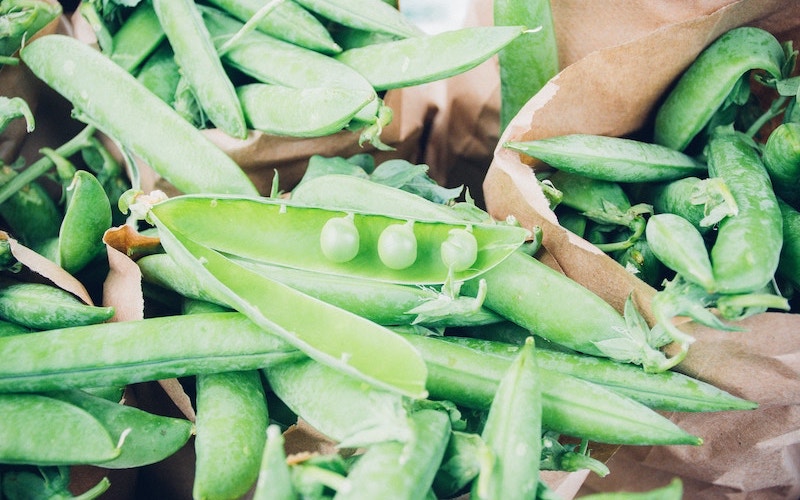Using Meditation to Train New Tasting Pleasures
Episode #2 of the course Hack your diet: Using nutrition science to live healthier, longer, and diet-free by John Robin
Welcome to our second diet hack!
Yesterday, we saw the science behind why we eat poorly and how it’s all down to brain chemicals and recipes formulated by the food industry to maximize stimulation of the pleasure centers of the brain.
The way out of that is through re-educating your taste buds, first and foremost. This will be the focus of today’s lesson. It is the how behind a healthy diet.
How Training Emotions Is the Gateway to Training Taste
Emotions are felt in the body, and though science is still unclear on exactly where they form, different parts of the brain are implicated in different emotions. Fundamental emotions like fear, anger, and aggression and impulses like hunger and thirst, are in the deeper brain. These are thought to be older and inherited from ancestors who lived tens of millions of years ago. Some people call them reptilian instincts, since these possibly go back to ancestors we shared with the ancient dinosaurs!
The outer part of the brain is called the neocortex. “Neo” is a scientific word from the Greek neo, which means “new” or “young.” Literally, this is our “new brain,” referring to the structures that make humans uniquely human, specifically the capacity to perceive and reason.
Pleasure centers are strong because in order to survive, we needed a big reward to motivate us. Twelve thousand years ago, when these instincts were helpful, there weren’t any double bacon cheeseburgers, and the demands of hunting and survival had our ancestors burning energy constantly.
But we moved on. We developed agriculture and tools, which allowed us to form food surpluses and eventually settle in fixed locations, soon giving rise to cities and nations, politics and businesses—and fast food and persuasion marketing, along with the freedom to come home from work and relax in a secure home and eat ice cream.
This brings us back to emotions. There are many emotions we can feel, and not all are rooted in pleasure. So-called “higher emotions” are emotions that are modulated through the involvement of higher brain function, in the outer neocortex.
And here’s where things get truly powerful: Because the neocortex is involved in higher-level decision making, that means you can use it to create higher emotions by way of a special kind of thinking called mindfulness.
Joy is one such emotion you can create through mindfulness. Joy can be felt when we are extremely satisfied. But joy can also be felt when analyzing certain thoughts or finding deeper meaning in experiences or memories or thoughts about them.
Training yourself to feel joy in eating healthy foods means you must invoke mindfulness.
Most likely when you hear mindfulness, you think of meditation. But mindfulness doesn’t mean sitting in a chair and focusing on your breath. Mindfulness is, in its most universal sense, the art of being aware.
Imagine your stream of thoughts flowing. You are in it. But the moment you become aware of it, you can observe yourself thinking. This is mindfulness. You will fall back into the stream eventually, but the more you train yourself to step out of the stream, the more aware you become. The art of meditation is the art of learning to train your thinking in as many moments and as many ways as possible.
You can train your mind with taste and food—for example: butternut squash and potatoes, oven roasted in olive oil and sprinkled with salt and pepper. That might not excite you right now, but as you’ll find out tomorrow, if you treat eating healthy foods as opportunities to train yourself to enjoy them for what they are, you will form new associations.
Now, hunger in your mind can lead you to two places:
• a juicy burger, full of fat and salt
• new kinds of healthy foods that you train yourself to enjoy, full of balanced nutrients
Every time you make the choice to enjoy the taste of healthy foods, you strengthen these new pleasure pathways, invoking joy in the cascade of higher brain function that is mindfulness.
Action: Begin Your Eating Meditation Now!
Start with a healthy food that doesn’t excite you but that you don’t hate either. What about a potato?
Poke holes in it with a fork, cover it with olive oil, and sprinkle on salt and pepper. Cook it in the oven at 375-400°F for about an hour. Now, eat it slowly and meditate on each bite. Really pay attention. Think about the textures, flavors, and overall experience of eating healthy foods. Think of this as a beginning.
Tomorrow, that beginning is going to take us further: What does a basic healthy diet look like, and why?
Recommended resource
Nutrition Action Healthletter, published ten times annually.
Share with friends

